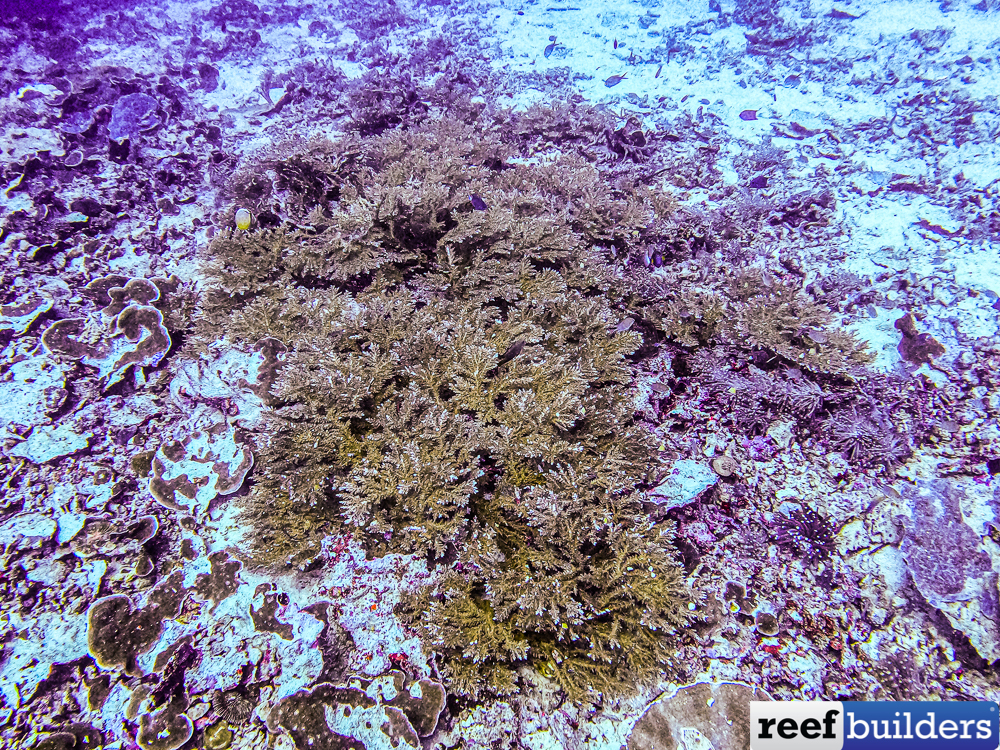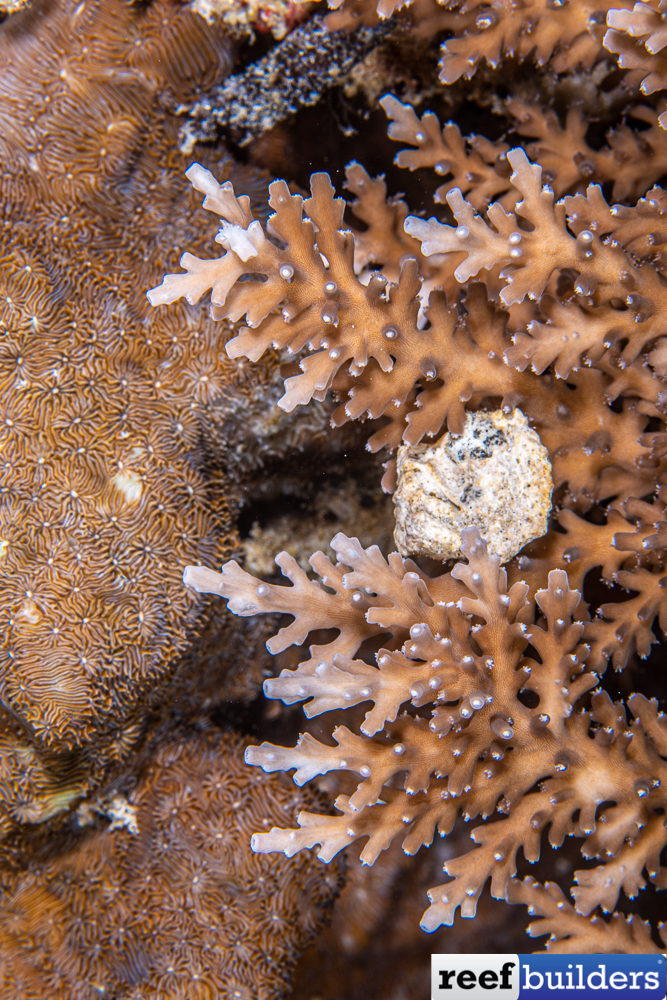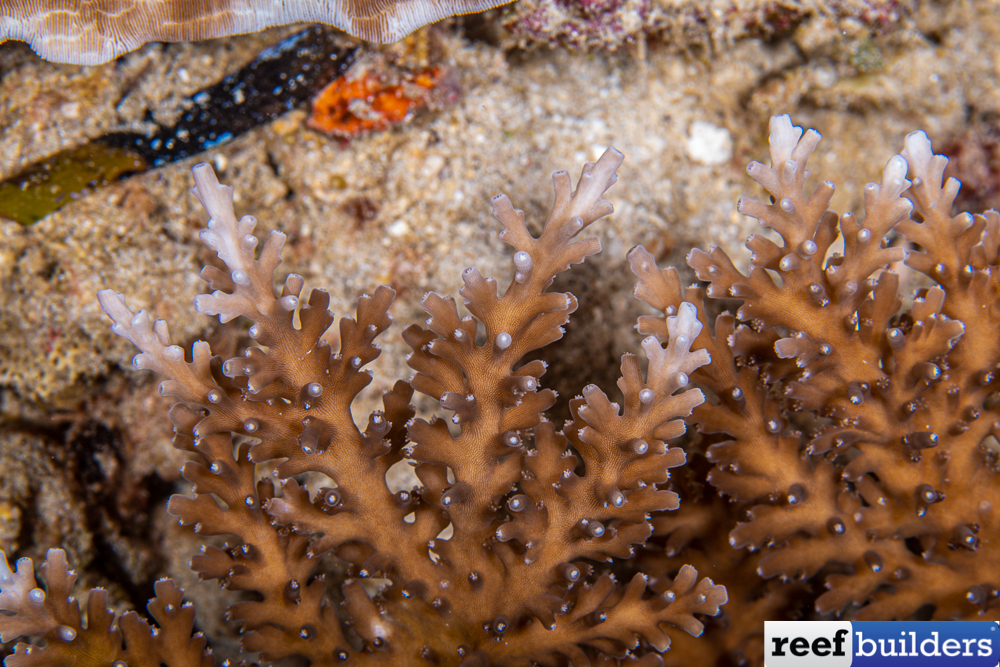Being dyed in the wool Acro nerds there is one species which holds a special place in our hearts, Acropora tenella. We are all familiar with so-called ‘deep water’ Acropora but what we call deep Acropora is basically anything you start seeing below snorkeling depths of 10 m (30ft) of water, so not really deep at all.
Acropora tenella is in a whole different category since it is one of those corals you only start finding below 40 m (120ft) of water. That’s right at the limit of recreational diving and it is recorded well past the 100m (300 ft) mark, actually holding the world record depth for Acropora at 110 meters or 360 feet – that’s ten times deeper than the smooth skinned Acros which pass for deep water in the aquarium hobby.

We came across this deep water specialist on a ledge at the bottom of a vertical reef wall, in Bunaken National Park, North Sulawesi, Indonesia which is well renowned for pristine wall diving.

This delicately branched, plating Acropora has a very unique appearance which reminds us of a kind of ‘plating echinata’, if we could quickly describe it. The colony we found was almost 2 meters wide, resting on a wide ledge before the wall plunged straight down to the abyss. The Manado Bay is over 1500 m deep (4500 ft), and is the second place where the coelacanthe was found. This deep water reservoir is probably the reason why reefs in that area are so vibrant. This cool deep water reservoir, keeps water cool enough that bleaching are very rare in this area.

The hispidose fan shape, plating branches of Acropora tenella are very characteristic and the very delicate branch shape can only withstand very mild water flow. The coloration is cream/brown with very mild pinkish tint to it that could easily brighten up in aquarium, especially the slightly purple tips. The water we find it in, is pretty clear, with high visibility that can reach 20-30 m (60-90ft) which is pretty good for Indonesia’s commonly turbid waters. So we can only imagine what kind of greatly reduced light this coral survive on.




